Some of the most iconic buses in American history were marvels of engineering built at the peak of when public transportation was both functional and beautiful. Buses like the GMC New Look and the Flxible Clipper get all of the attention, but I recently discovered a bus that’s deeply underrated: the 1944 White Model 798 city bus, Chicago Surface Lines 3407. This World War II-era bus is an amazing example of doing a lot with a little, and it’s made even better by its 12-cylinder ‘pancake’ engine, which sounds like nothing else.
I got to ride Chicago Surface Lines 3407 last weekend during the Illinois Railway Museum’s 10th annual Bus Day. While the Illinois Railway Museum is known best for its rockstar cast of historic rail equipment, it also has around 40 buses, more than a dozen of which are motor buses with gasoline or diesel engines. The rest are electric trolley buses. IRM’s bus collection spans more than a century of time, and a shocking chunk of the rare buses still run and drive. The museum prides itself on being the only museum in America with regular trolley bus operation. IRM has not just the bus legends, but also a handful of buses that don’t exist anywhere in the world.
The museum’s 1944 White Model 798 is not the only one of its kind, nor is it really a legend. But I think it’s a deeply underrated and beautiful machine. It’s not so much beautiful in the sense of aesthetics, but gorgeous in how it so excellently makes the most with the least, as was the standard during World War II.
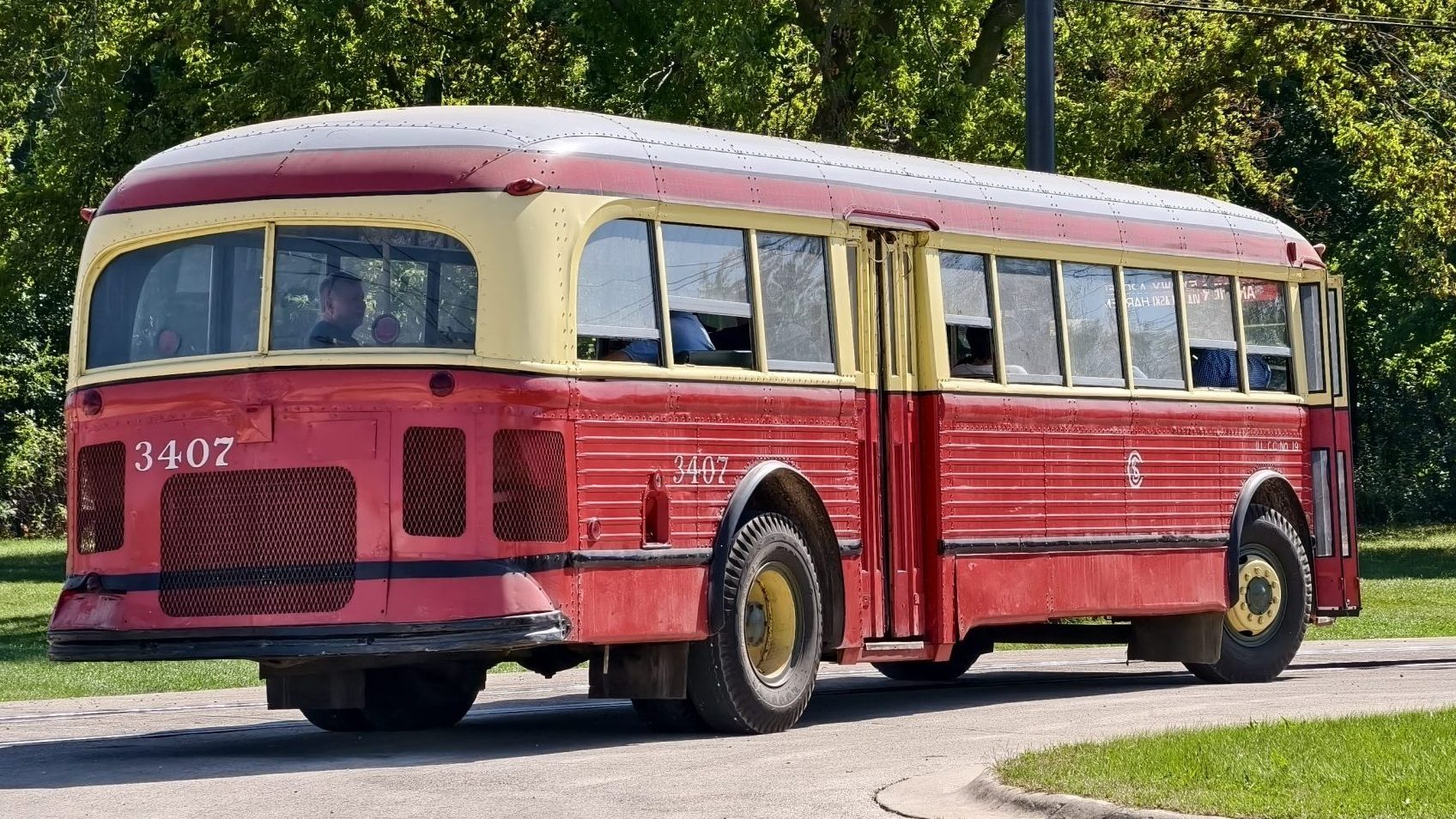
The War Effort
World War II changed manufacturing in America. Our nation sent around 806,000 heavy-duty trucks, 310,000 planes, 124,000 ships, and 100,000 armored vehicles to fight. Harley-Davidson alone produced more than 90,000 motorcycles for the war effort. That’s just the tip of the iceberg of war production, which included 41,000,000,000 rounds of ammunition. Tons of raw material and incredible amounts of labor were required to crank out this many vehicles so quickly.
During the war, production of many non-essential items for civilian use was halted and most materials were fed into the war effort. As the National World War II Museum writes, Ford built 691,455 cars in 1941. Then Ford built only around 160,000 more cars in 1942 before it shut down non-military production lines. The U.S. government then rationed off whatever cars were unsold. To be eligible to buy a new car, you usually had to be in an essential role like a doctor, firefighter, or farmer, and had to have an older car with more than 40,000 miles.
This rationing went to the extreme. Household name automakers like Packard and General Motors became less known for cars, but for their aircraft engines, tanks, guns, and military trucks. At the peak of war production, PBS writes, Ford built a B-24 Liberator every 63 minutes.
RV companies and bus makers largely shut down their civilian production lines to help win the fight, and what vehicles they did produce were built with as few materials as possible. That’s where the White Model 798 comes in.
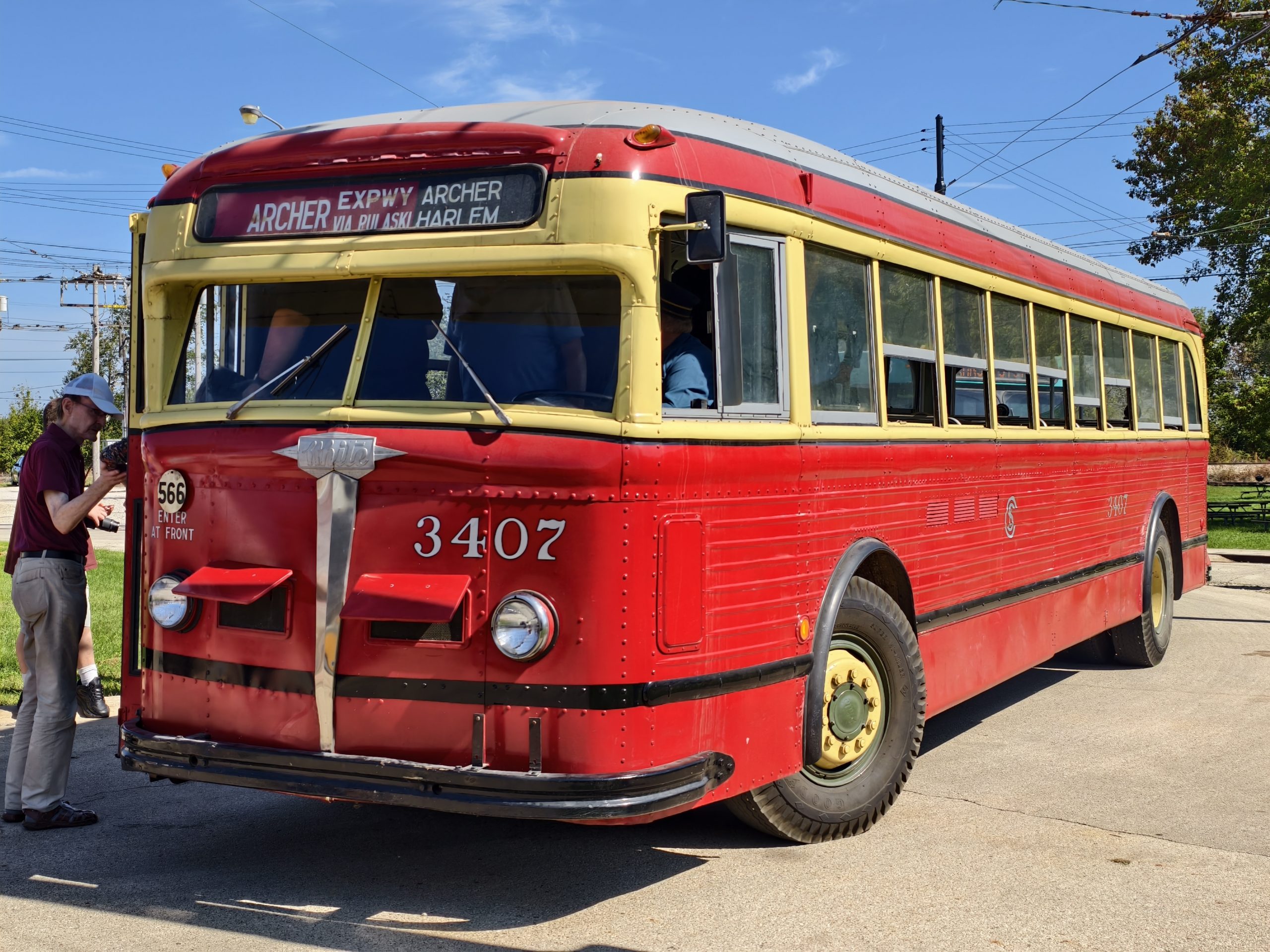
White Buses
The White Motor Company of Cleveland, Ohio, was founded in 1900 as an offshoot of the White Sewing Machine Company, which was founded in 1876. The company’s first vehicle was a steam car, and it would later expand into trucks and buses. White’s buses are perhaps best known for being the tour vehicles of choice of the Yellowstone Park Transportation Company and later, the Yellowstone National Park.
In 1917, Yellowstone placed an order for 50 buses from White, and many of those buses had actually been built in 1915 and 1916. The most famous of the Yellowstone buses are its White 706s from the 1930s, which were also affectionately known as the ‘Red Jammers’ when painted red for use in Glacier National Park. I have written about these legends before:
Hemmings writes that Ford, REO, GMC, and White were challenged to build a bus that could survive the rough roads while safely carrying passengers. White won out above the rest with a bus that performed the best. The White 706 wasn’t a particularly hot truck. You were looking at a 318 cubic inch 16A flathead inline six-cylinder engine made just 94 horses, or about the output of my smaller 1948 Plymouth Special DeLuxe. However, the White made good use of all of those horses in its gearing. A White 706 could confidently climb through Glacier and other parks at a leisurely speed of 20 mph. That’s not to say the buses could go much faster, as they were geared for a top speed of 35 mph.
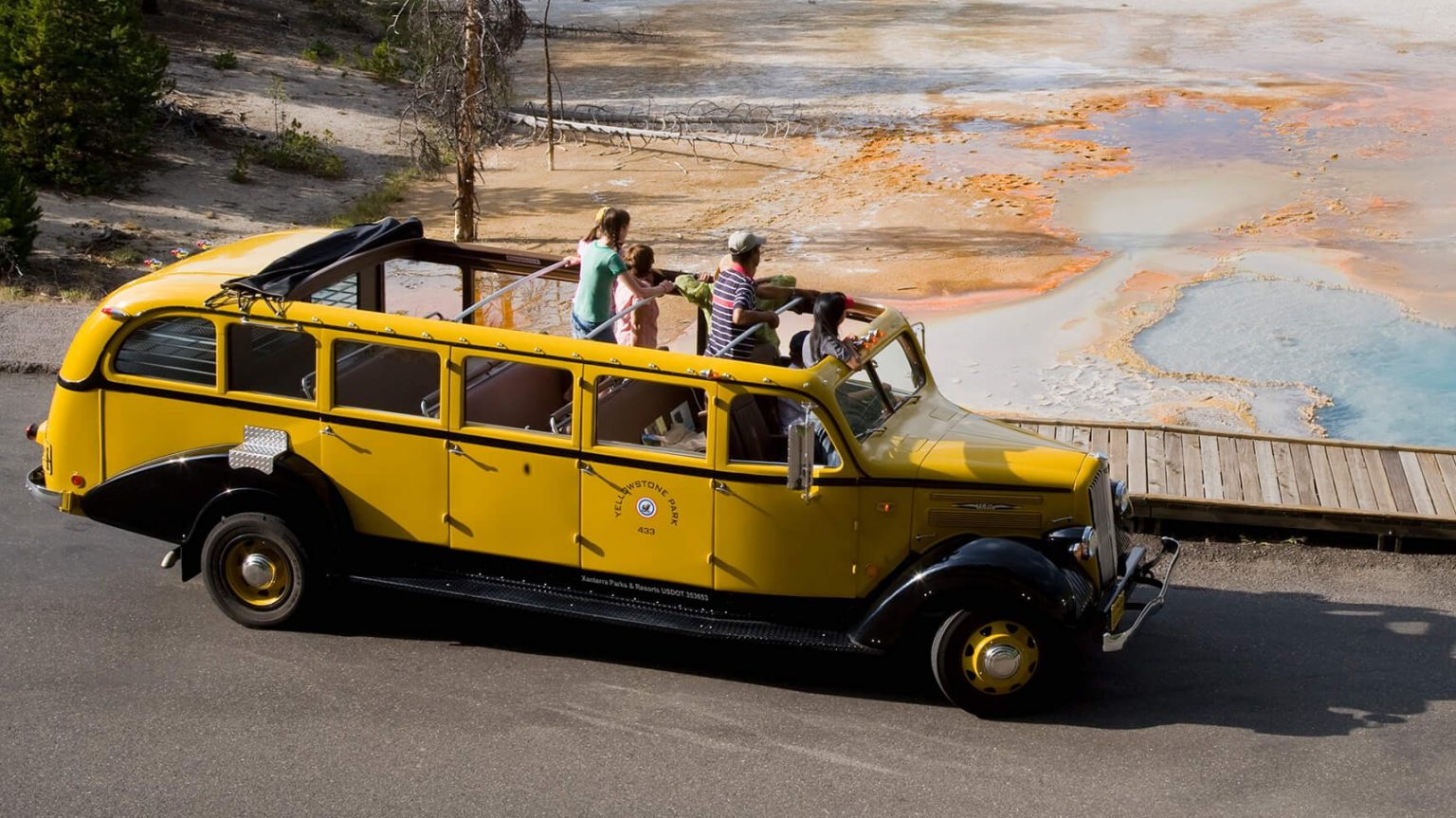
The gorgeous design of the 706 buses is attributed to Count Alexis de Sakhnoffsky, White President F.W. Black, and Herman Bender of the Bender Body Company. The front end was styled by de Sakhnoffsky while everything else was handled by Bender. The buses had a roll-back top for open viewing and up to five passenger doors on the right side.
In addition to the funky door situation, the buses were built with oak wood frames to support their bodies. The parks also painted their buses their own colors, with Yellowstone going with yellow and Glacier choosing red after the mountain ash berries found in the park.
The 700 Series
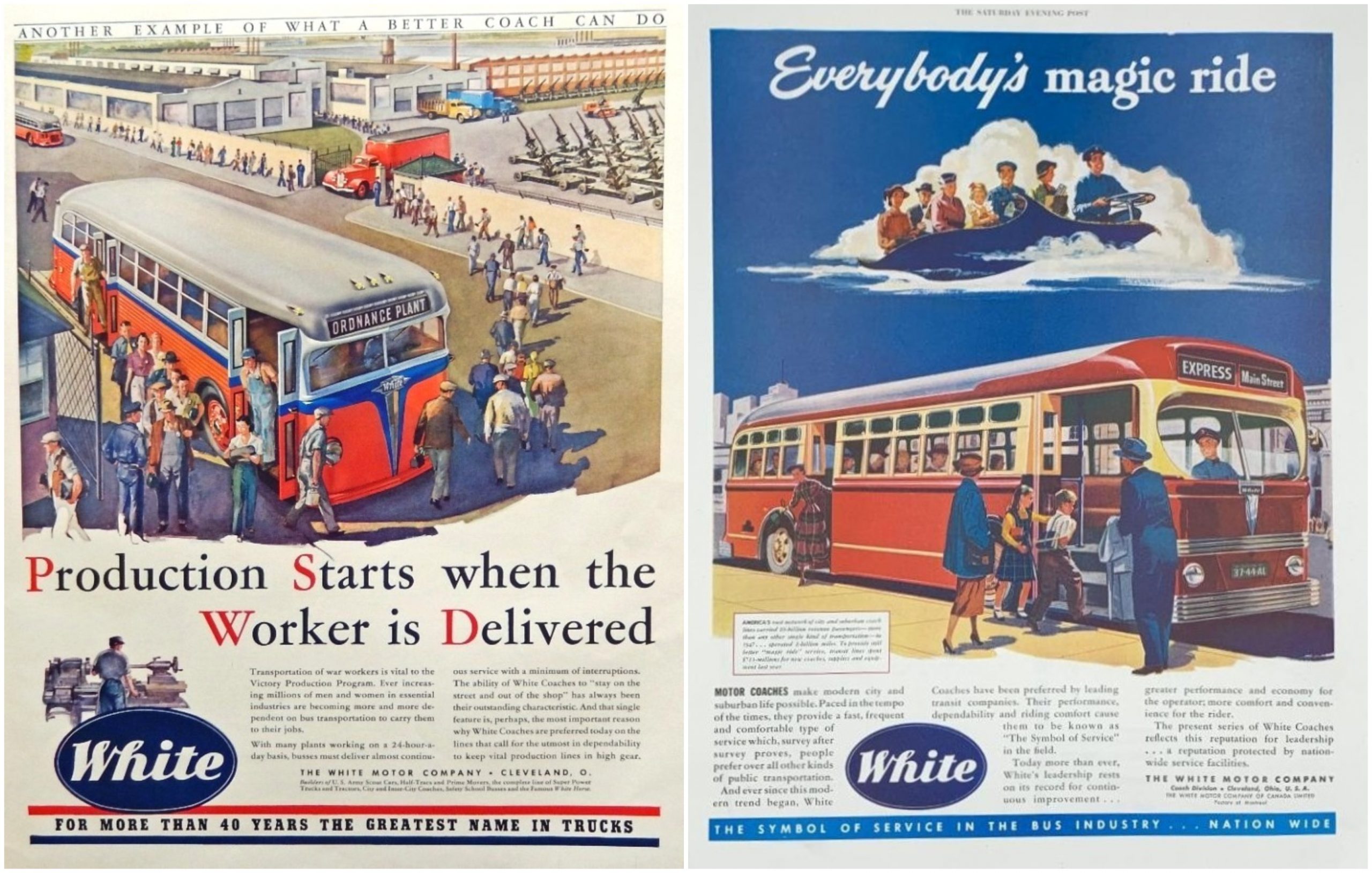
In 1937, White introduced its next-generation city bus, the 700 series. At the time, White boasted about the 700’s advanced features of the day, primarily its total aluminum alloy and high-tensile steel body. White also said that the bus had a single-level floor, a low center of gravity, and an integrated chassis and body for strength. The shorter bus of the 700 series was the 30-foot 748, and the longer model was the 35-foot 798, which launched in 1940. Some White documentation calls this bus the “Model 798,” while other documentation just calls it the 798. The 798 carried 45 passengers. White also sold the 33-foot 788, which had room for 38 passengers, in addition to other models. All of these buses were 96 inches wide.
The coolest part of the bus, I think, is what’s under the skin. Located in the middle of the bus and under the floor is a chunky 464 cubic-inch 12-cylinder engine. This mill was good for 165 HP, and the bus was geared for city driving a top speed of around 45 mph to 50 mph. As a result, the 700 series was considered a little bit of a hot rod back in its day. Other variants of White’s ‘Pancake’ 12-cylinder engine were noted to have 210 HP or 225 HP.
Update: I have been informed that this is not a horizontally opposed engine, but a 180-degree vee engine. So it’s a “flat” engine, but in the sense of its shape. But it’s not a boxer. That makes it even cooler!
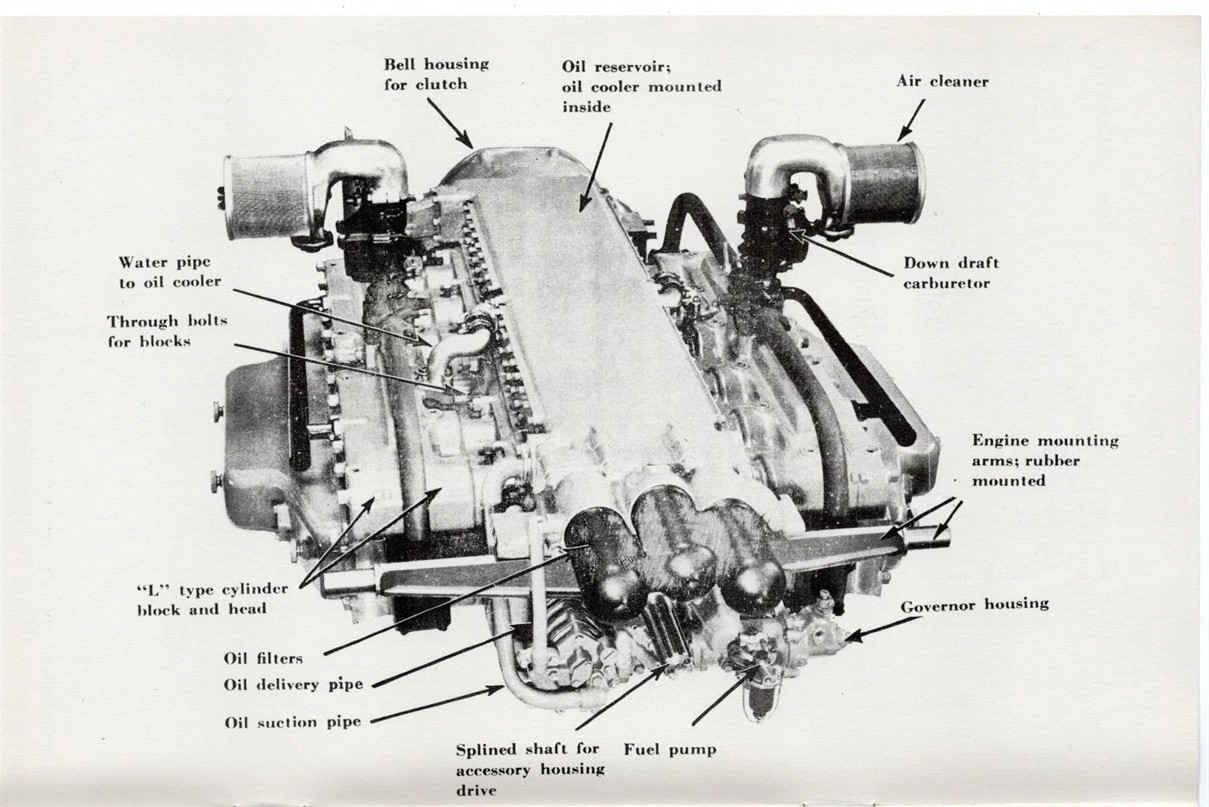
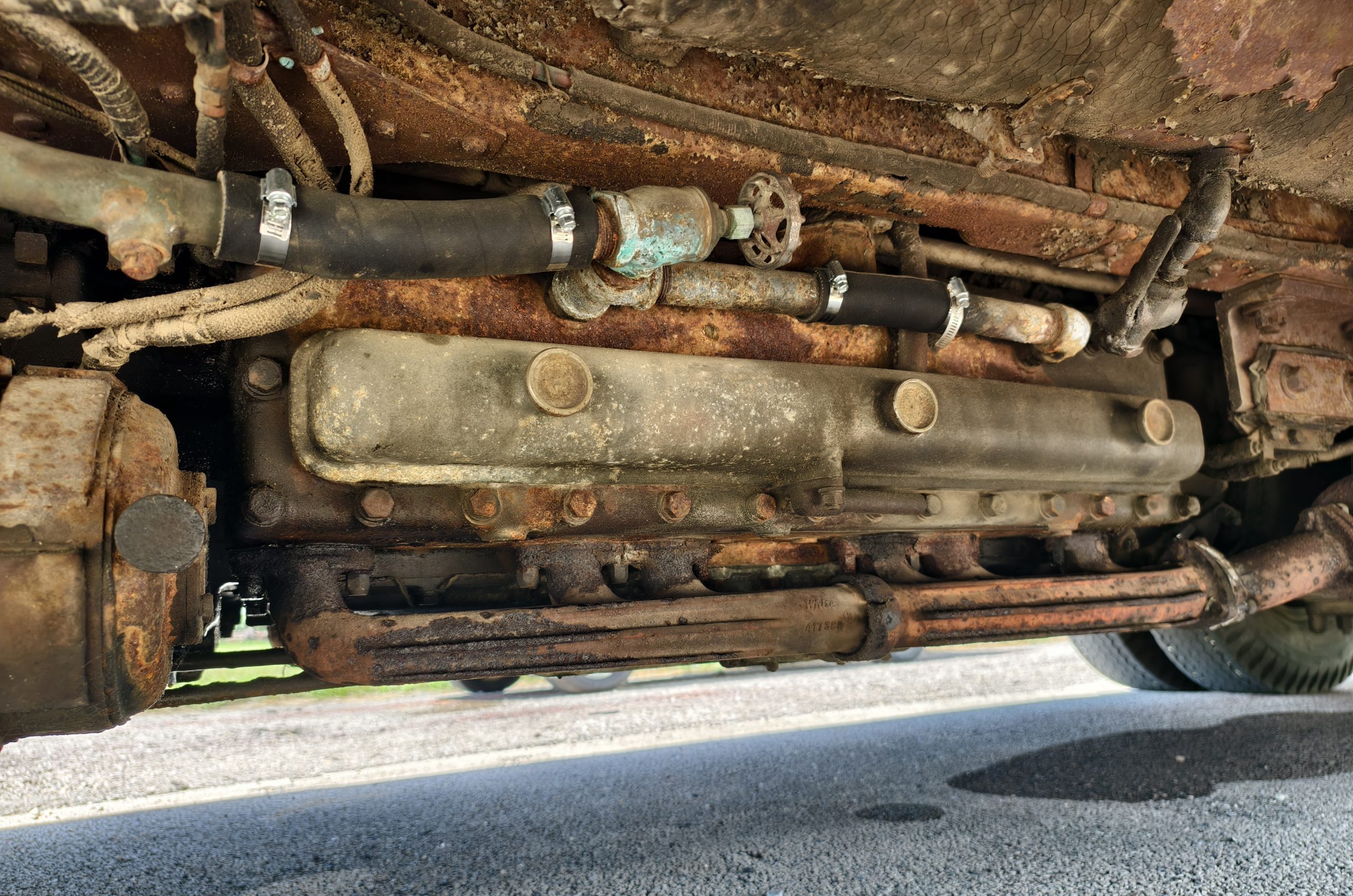

As for why White went with this route, a brochure from White claims that by putting a flat engine under the floor, it’s able to maximize the entire length of the bus body for passengers.
The 798 would go on to be a success and was scooped up by transit authorities all over North America, from New York to California. One of the operators of White Model 798 buses was the Chicago Surface Lines, which was the city’s street railway system operator in the first half of the 20th century.
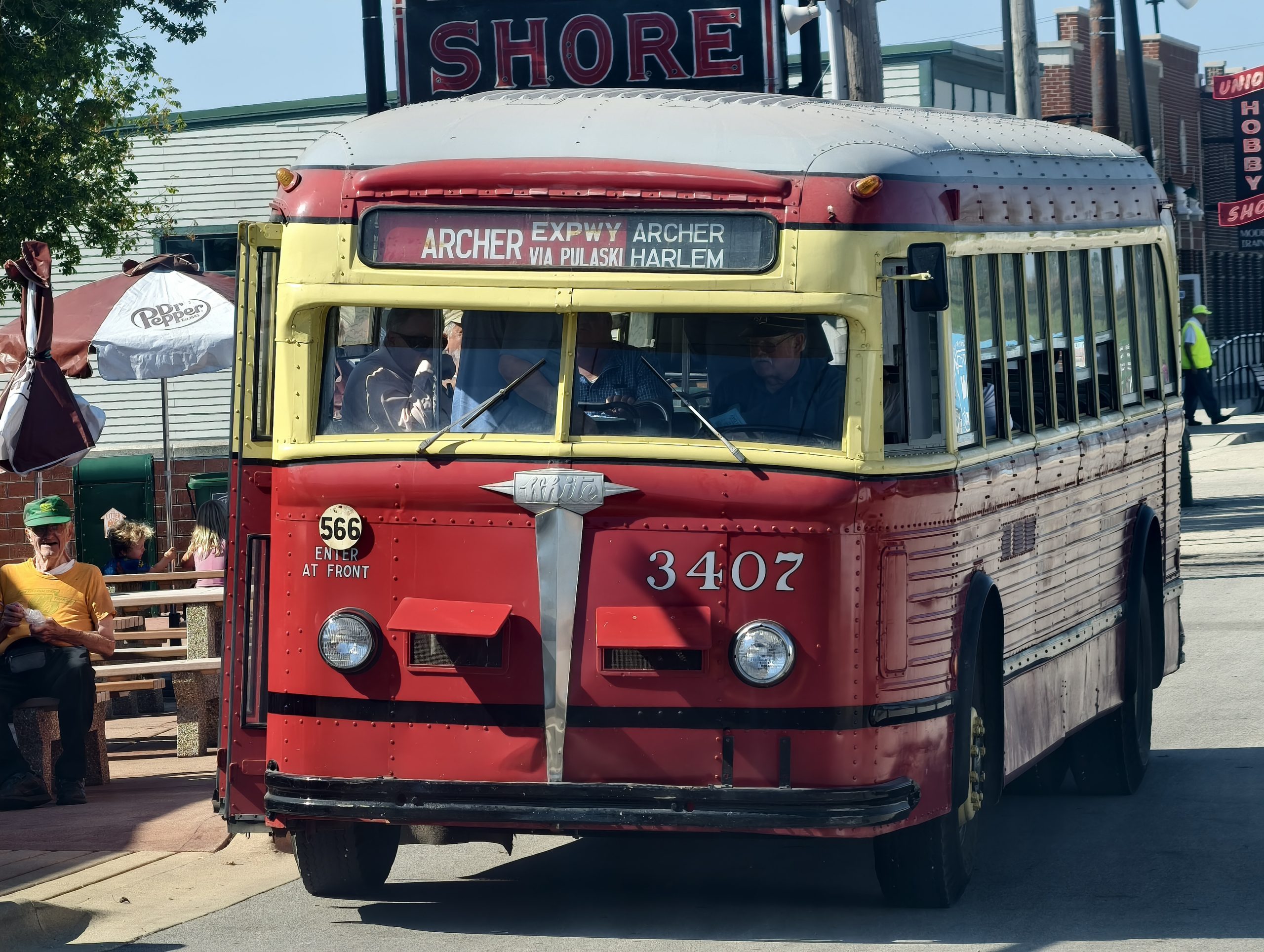
The White 798 got caught up in the war rationing effort, and the Illinois Railway Museum explains what happened next:
During World War II, bus manufacture was restricted by the War Production Board. The Office of Defense Transportation allocated the limited number of buses that were produced, to the cities that needed them the most. The Chicago Surface Lines placed an order for 297 buses with the White Motor Co. of Cleveland, Ohio, and was allocated twenty buses during 1944. The remainder of the order would wait until after the war, and delivery of the final buses took until 1948. All buses produced under ODT allocation were painted gray, to save time and labor. In addition, metal conservation restrictions for the war effort did not permit the use of chrome plating, so the seat frames and stanchions are made of enameled steel. Note the fluted sides; this corrugation stiffened the steel, so that it could be made thinner to conserve metal.
In order to get faster delivery, CSL bought the first portion of the order with three-speed manual transmissions; the last two-thirds had automatic (hydraulic) transmissions. […]
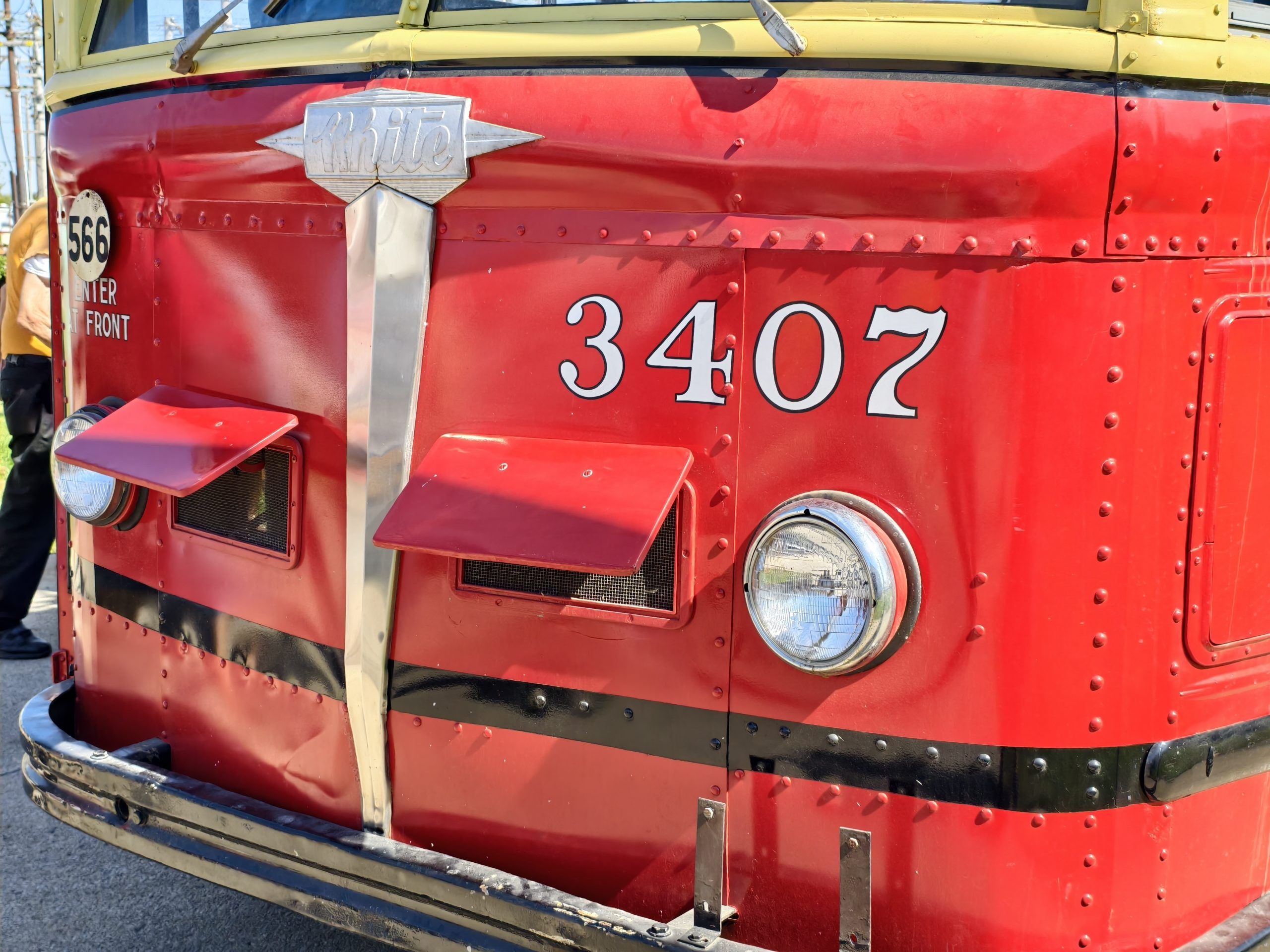
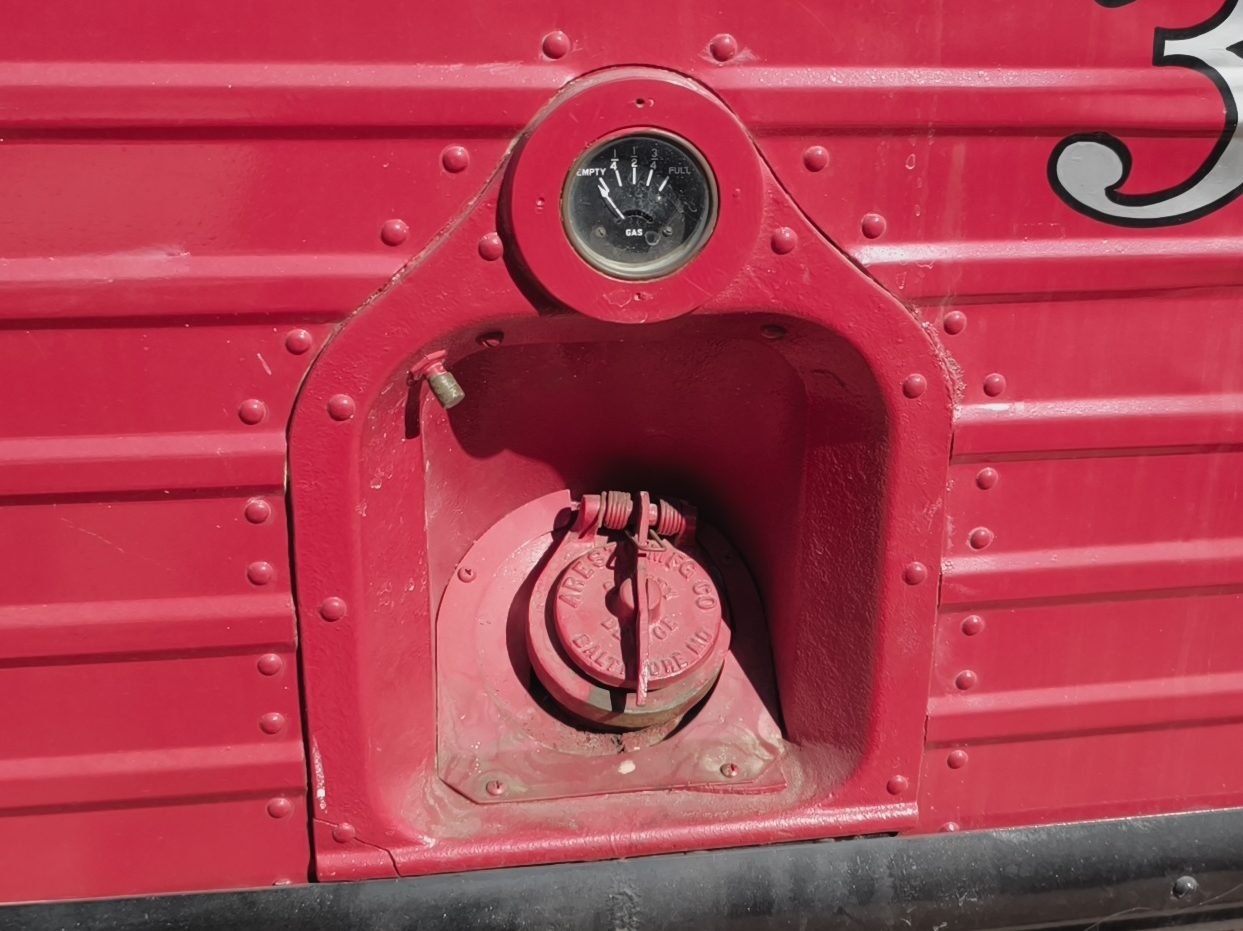
Bus 3407 was mostly used on the Archer Express route and was based at Archer Garage. It was retired from revenue service earlier than its sister buses, in 1955, and became training bus BT-2. It served in this new role until 1974, when it was put aside as part of a historical fleet. It was refurbished in 1981 and used mostly for ceremonial and public relations purposes. IRM acquired it in 1986.
1940s Glory, 81 Years Later
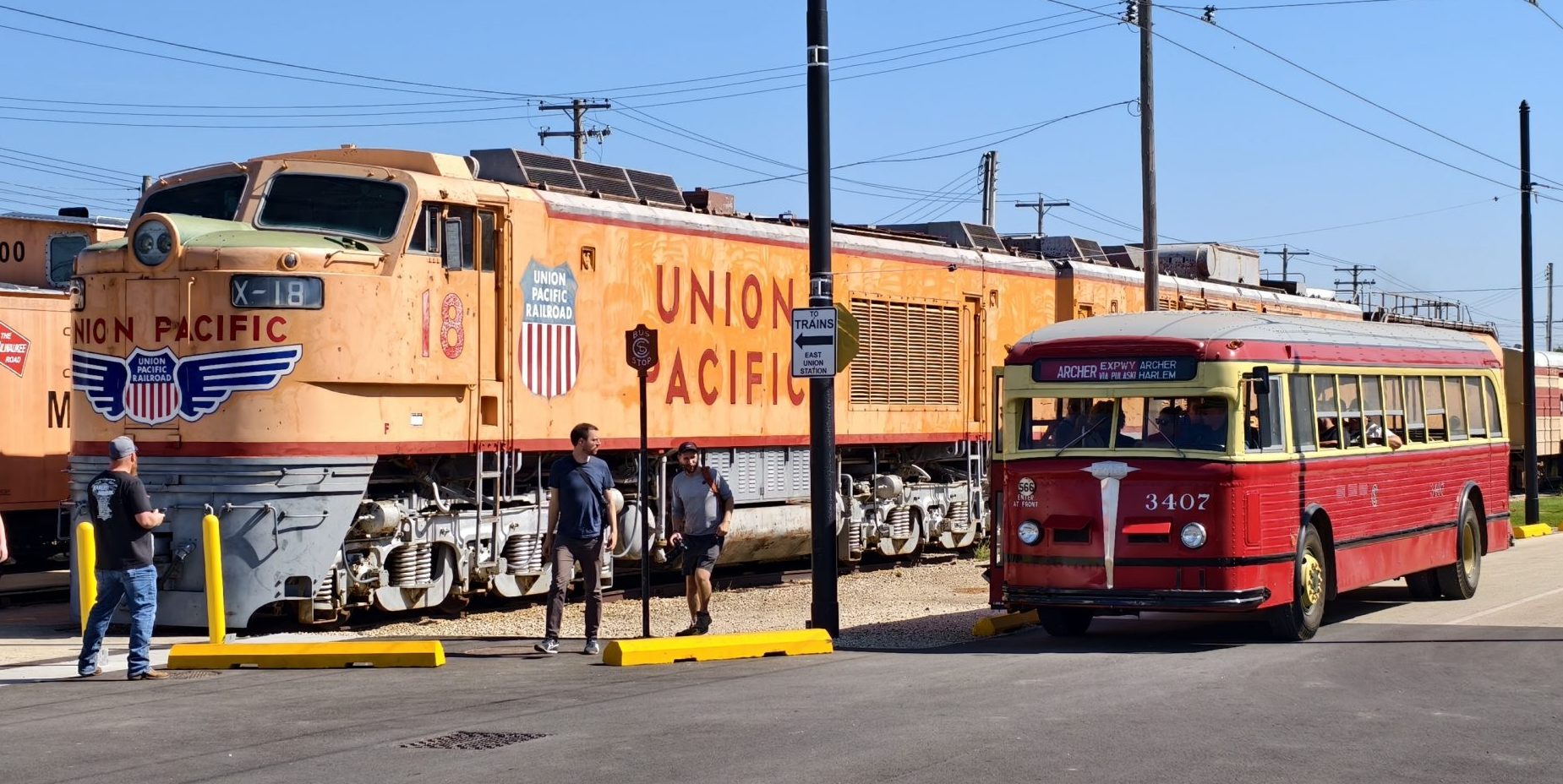
Chicago Surface Lines 3407 hasn’t run in at least 15 years, but a volunteer at IRM’s bus department made it his mission to get the old bus running again. He cleaned up the fuel system, powered through destroyed wiring, and cleaned up enough rust that the bus was able to take its first ride in so many years. Chicago Surface Lines 3407 is not in perfect shape; there’s still lots of rust to repair, wiring to run, and the rear axle is so poorly aligned that the bus has a terrible crabbing issue. But it ran good enough to run at Bus Day, and that’s where I found it.
What blew me away about this bus was how beautiful it was in its simplicity. It’s not adorned in pounds of flashy chrome, and the interior has little in the way of flair. The only real bit of spice is the windshield, which is angled inward to reduce glare. Otherwise, this bus is all business, from that long shifter and no-nonsense dashboard to the lack of any real creature comforts.
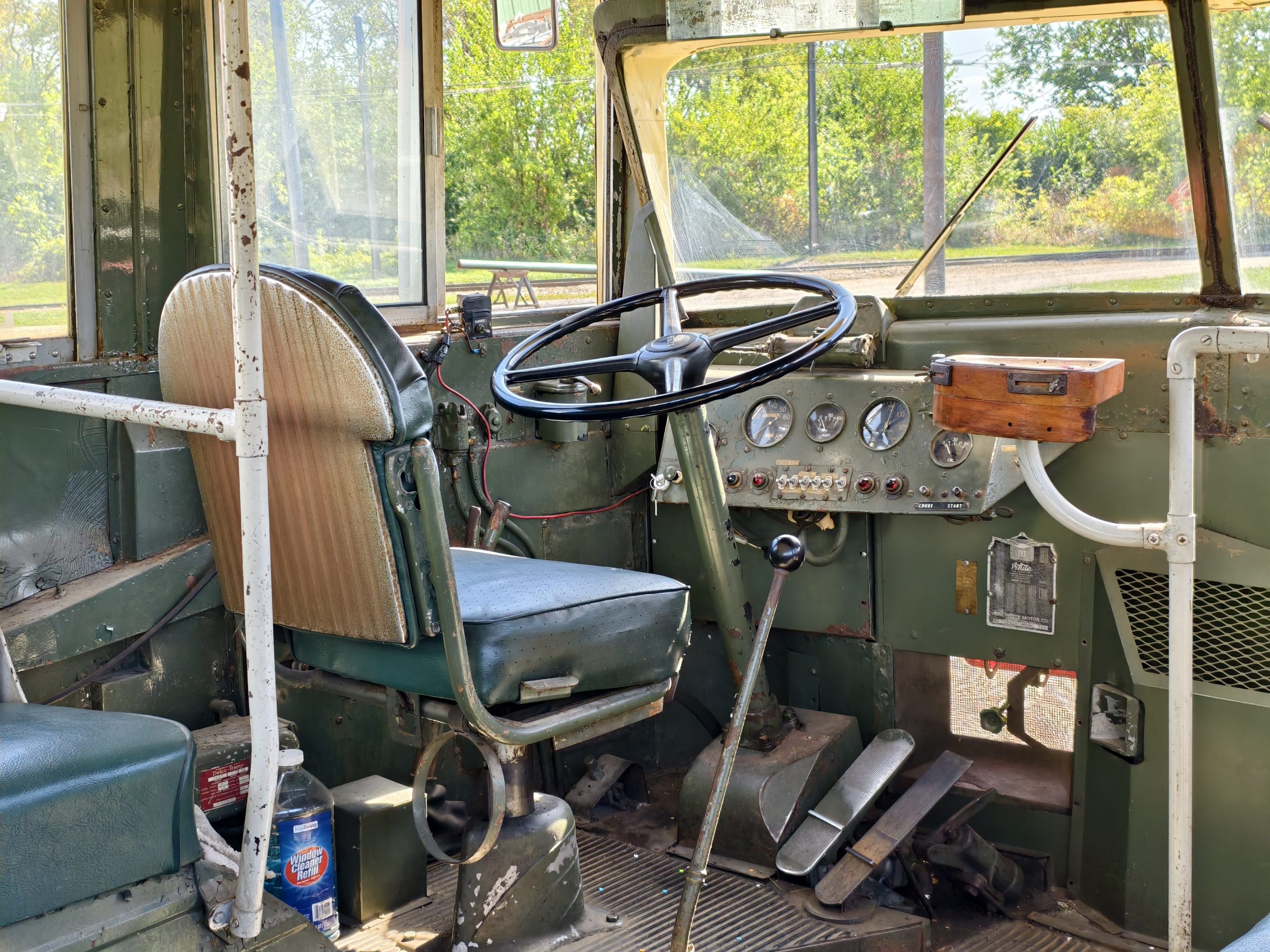
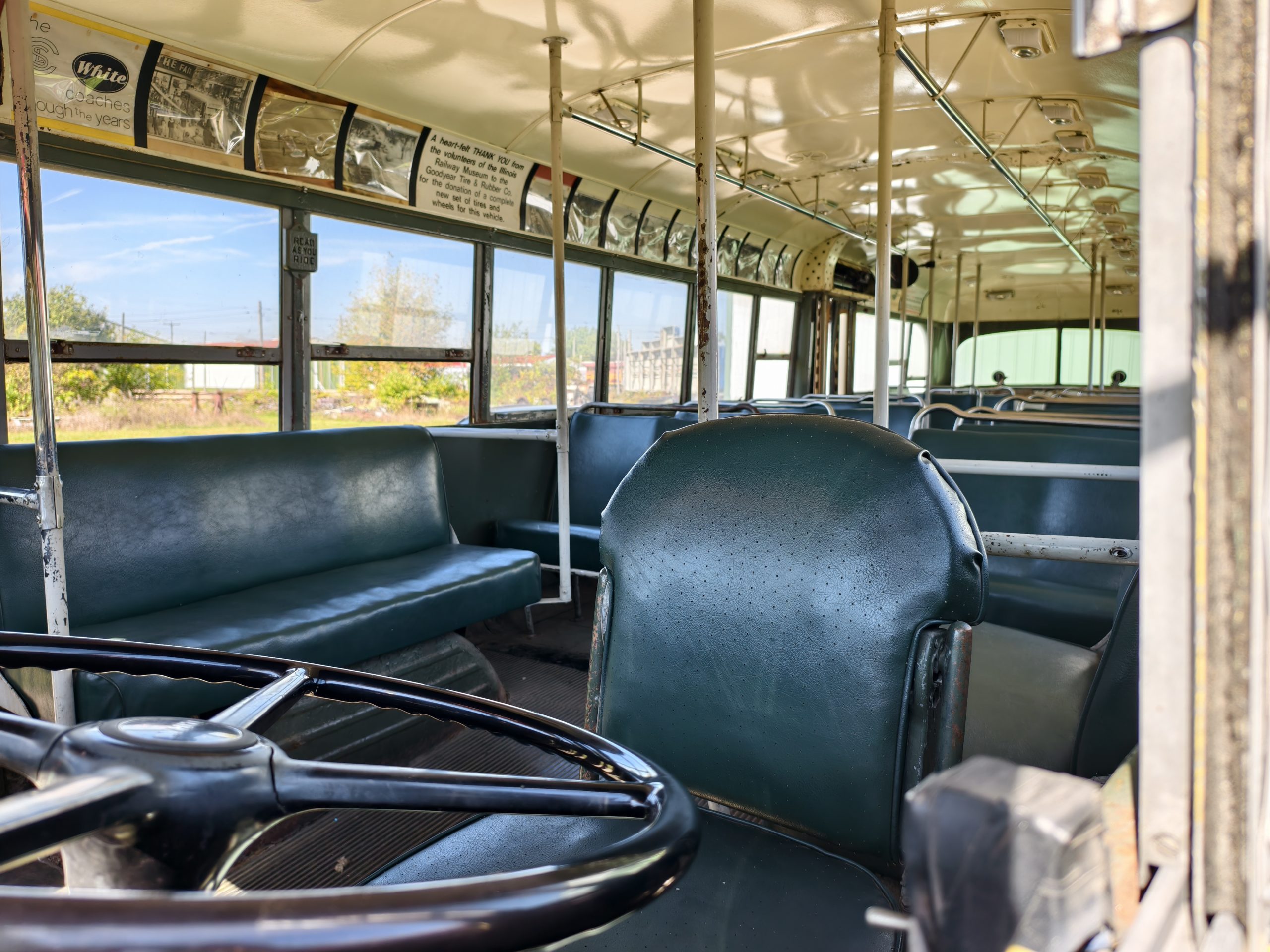
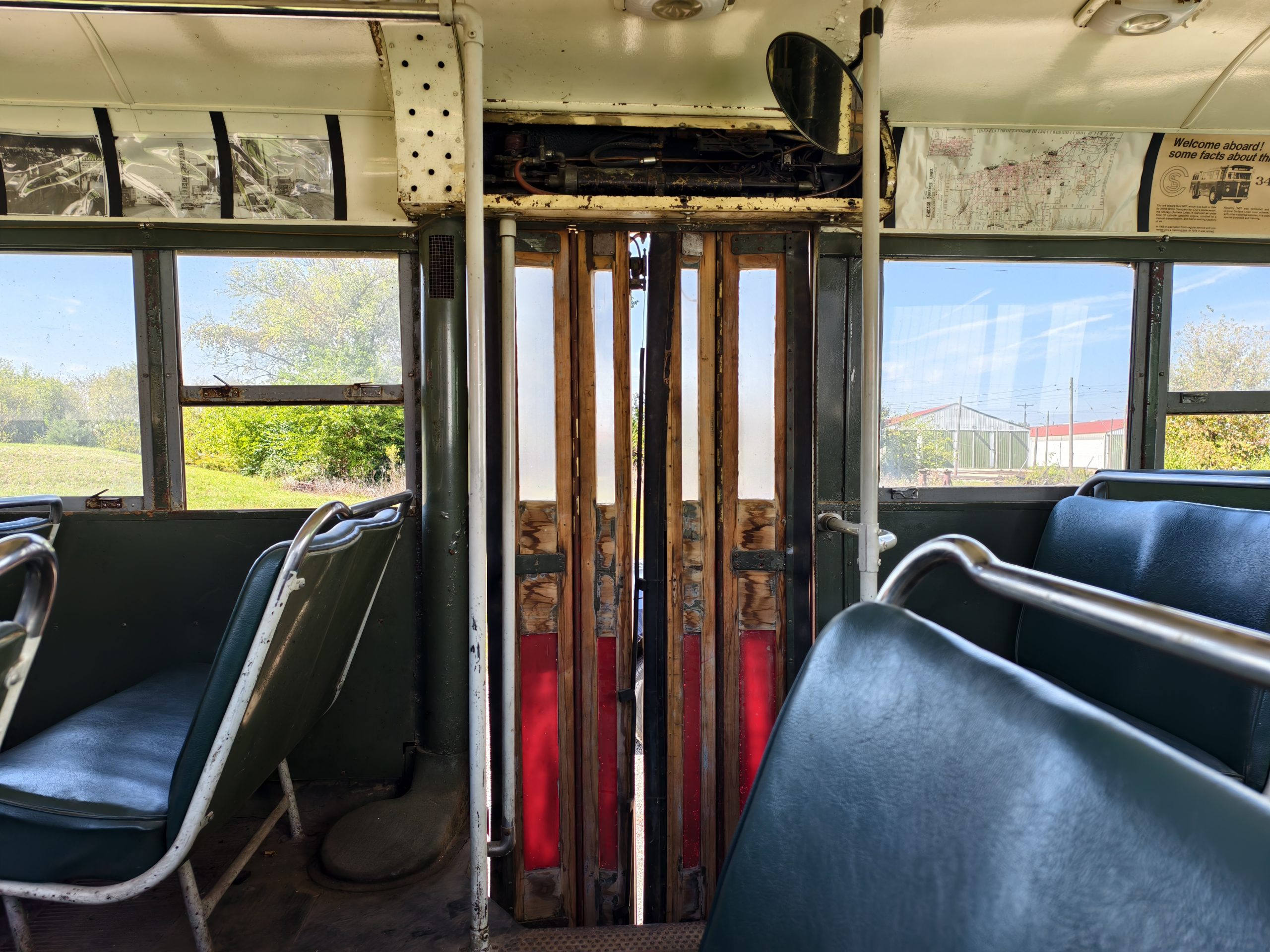
It was also fascinating looking at just how thin the metal was. The driver of the bus joked about how there was basically nothing in front of his legs, and crash safety wasn’t at all a concern. Indeed, the metal seemed so thin that you sneeze on it the wrong way and it would dent.
The highlight was that engine for sure. Despite the engine’s advanced age, it kicked off from a dead stop with a surprising push, and while the driver at IRM was not allowed to drive particularly fast, the bus did go just fast enough to listen to the music of that flat twelve. The engine had that distinctive flat engine note, but in the modern day, it’s rare to find a vehicle with a flat engine that has more than six cylinders. Doubling that makes for some of the greatest sound I’ve ever heard coming from a gasoline engine. Just listen to this:
Also, watch this video. Start at around the 10-minute mark if it doesn’t already load there:
That pancake engine might now be one of my favorite gasoline engines of all time. Certainly, I loved riding both the White 798 and IRM’s GMC RTS-II as much as I could. I mean, how often do you get the chance to ride in equipment powered by a Detroit Diesel two-cycle diesel and then a bus powered by a 12-cylinder pancake back-to-back?
The White 798 was produced until 1948, when it was succeeded by the 1100 series. By 1951, the pancake gasser was replaced by a more fuel-efficient Cummins diesel. This bus is not remembered not nearly on the level as the legends from Flxible or General Motors, but I think it’s worth not forgetting. Bus lines all over America trusted their operations to these buses, and their chunky engines got countless busloads of people to their destinations.
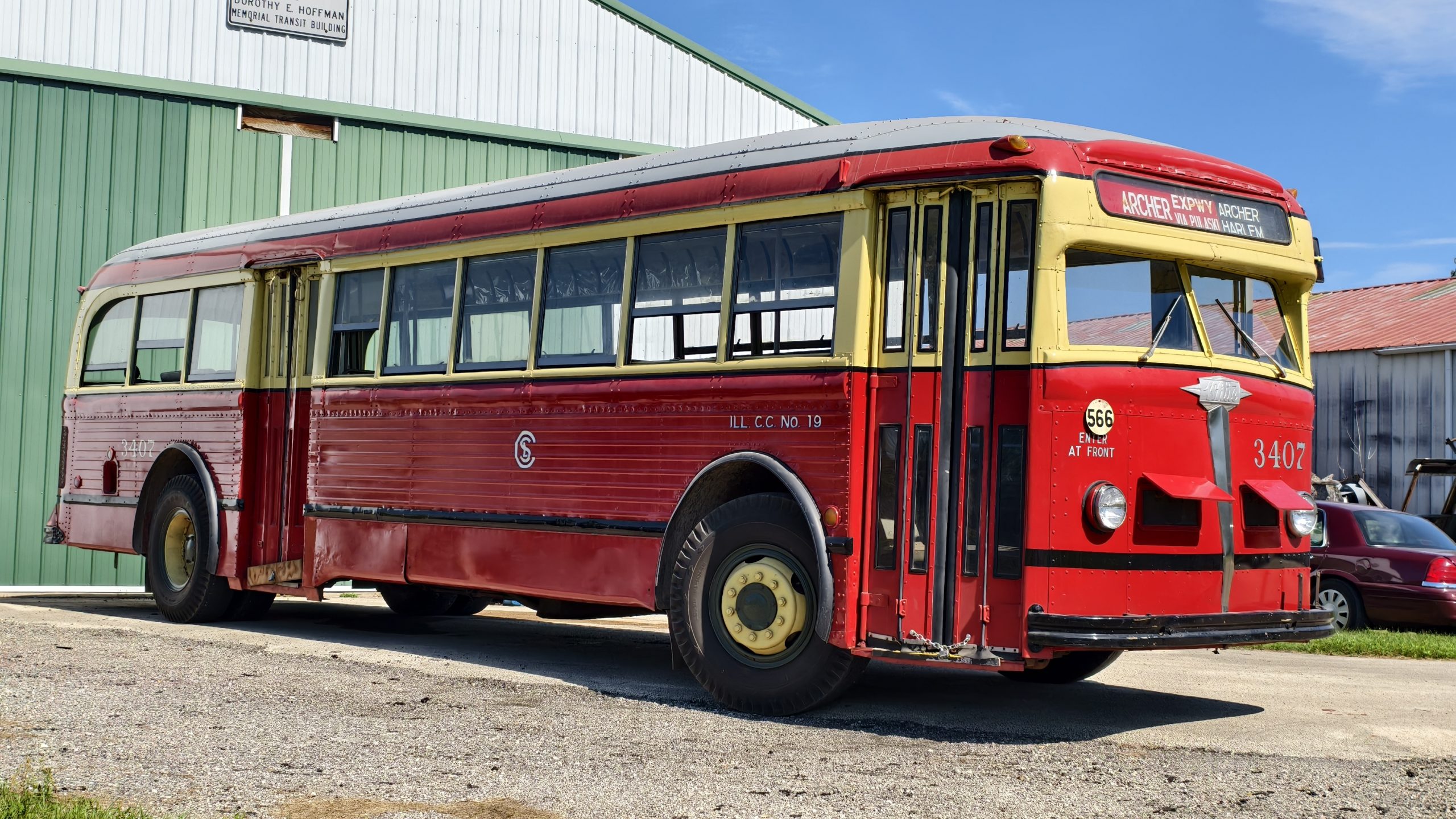
More than that, this bus is almost the poster child for doing more with less. The bus had no flair, and used so little metal that what little material it used had to be corrugated for strength. Yet, this bus has survived an incredible 81 years, which is considered to be a pretty decent life for a person, forget about a vehicle.
If you want to check out Chicago Surface Lines 3407, you pretty much have to wait until next year. IRM’s operations are beginning to wind down for the rest of the season, and it’s unlikely that the bus barns will be open for you to peek inside. But that’s just a good reason to get amped for next spring!
Top graphic image: Mercedes Streeter

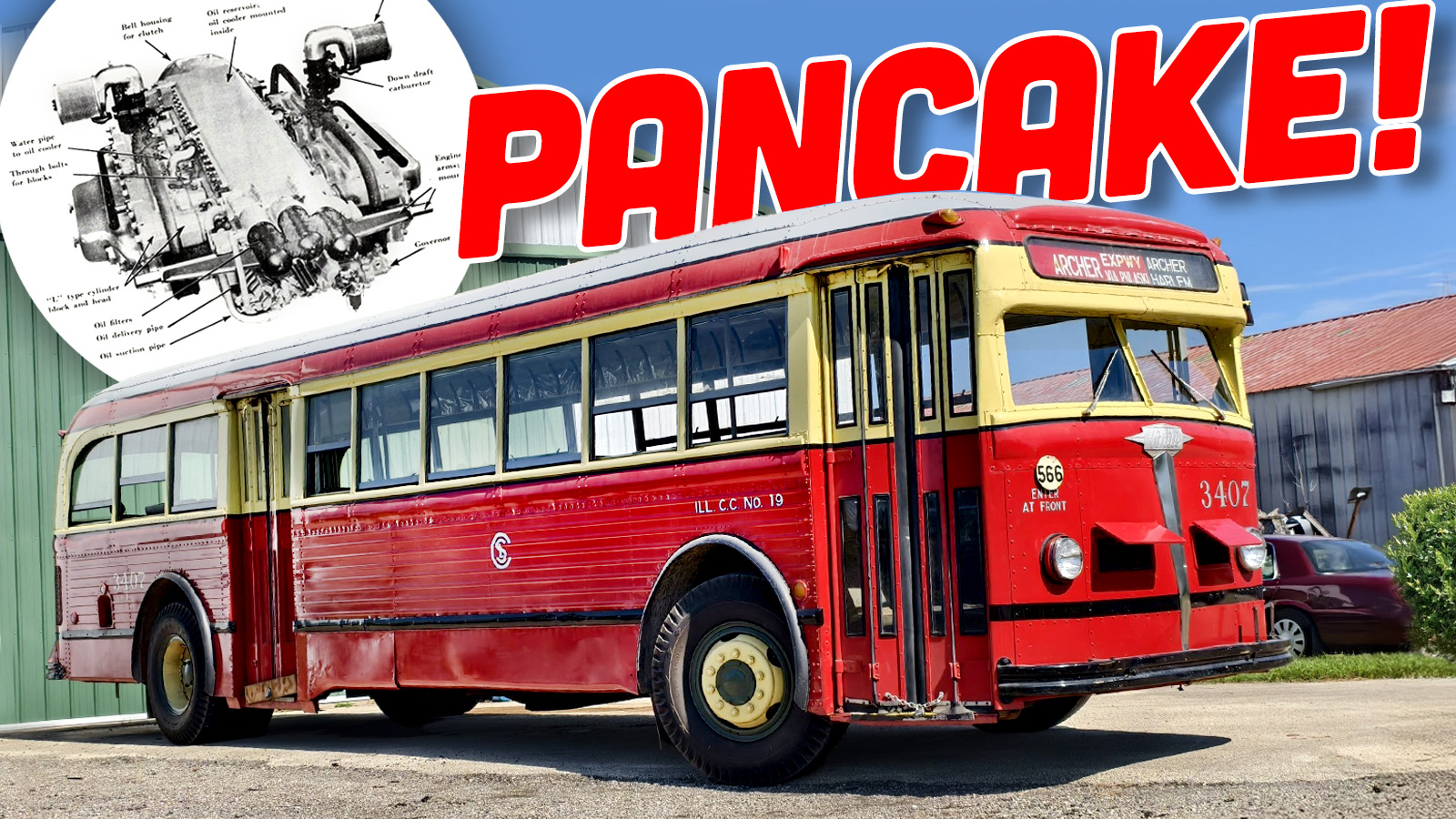





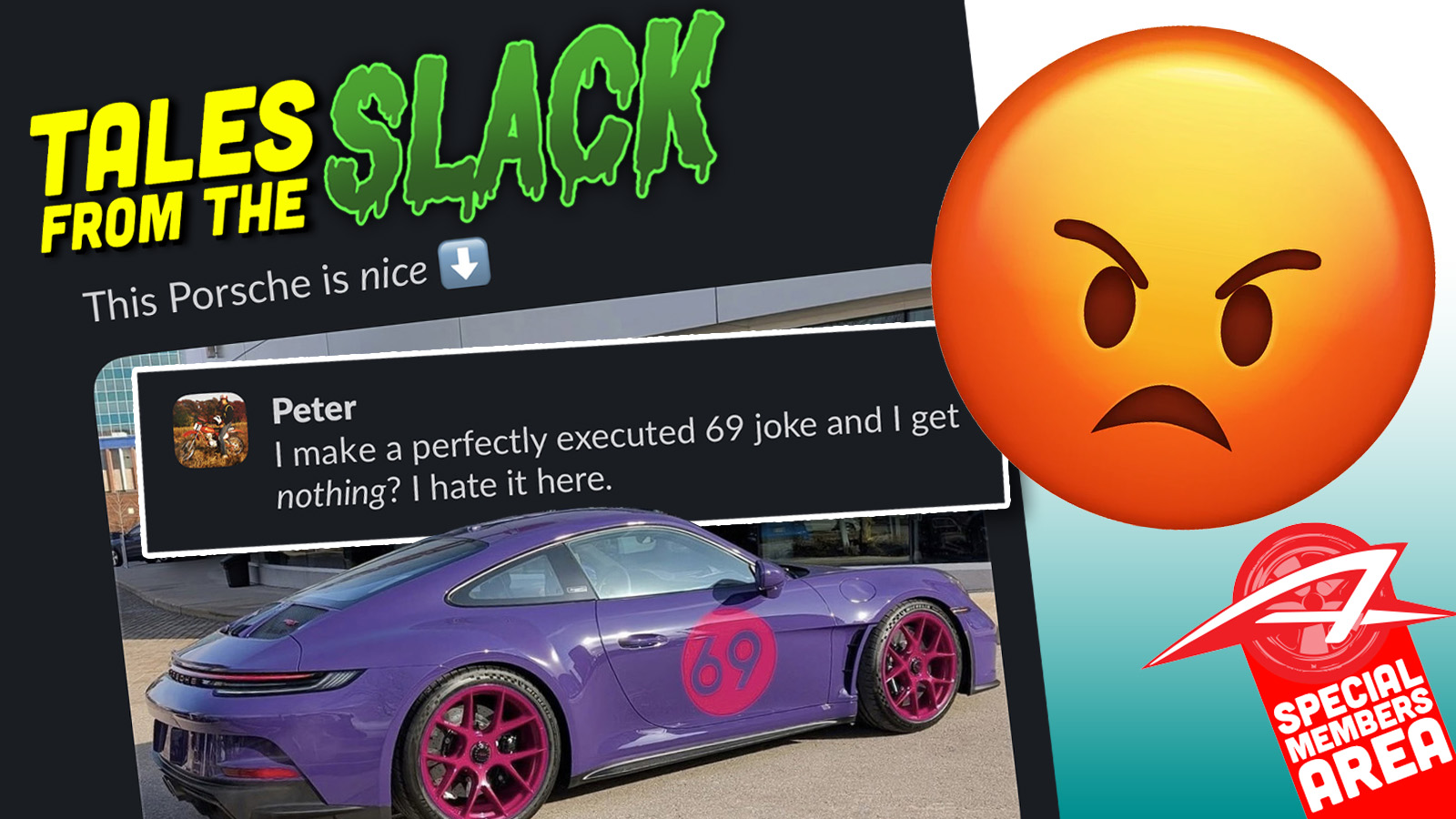
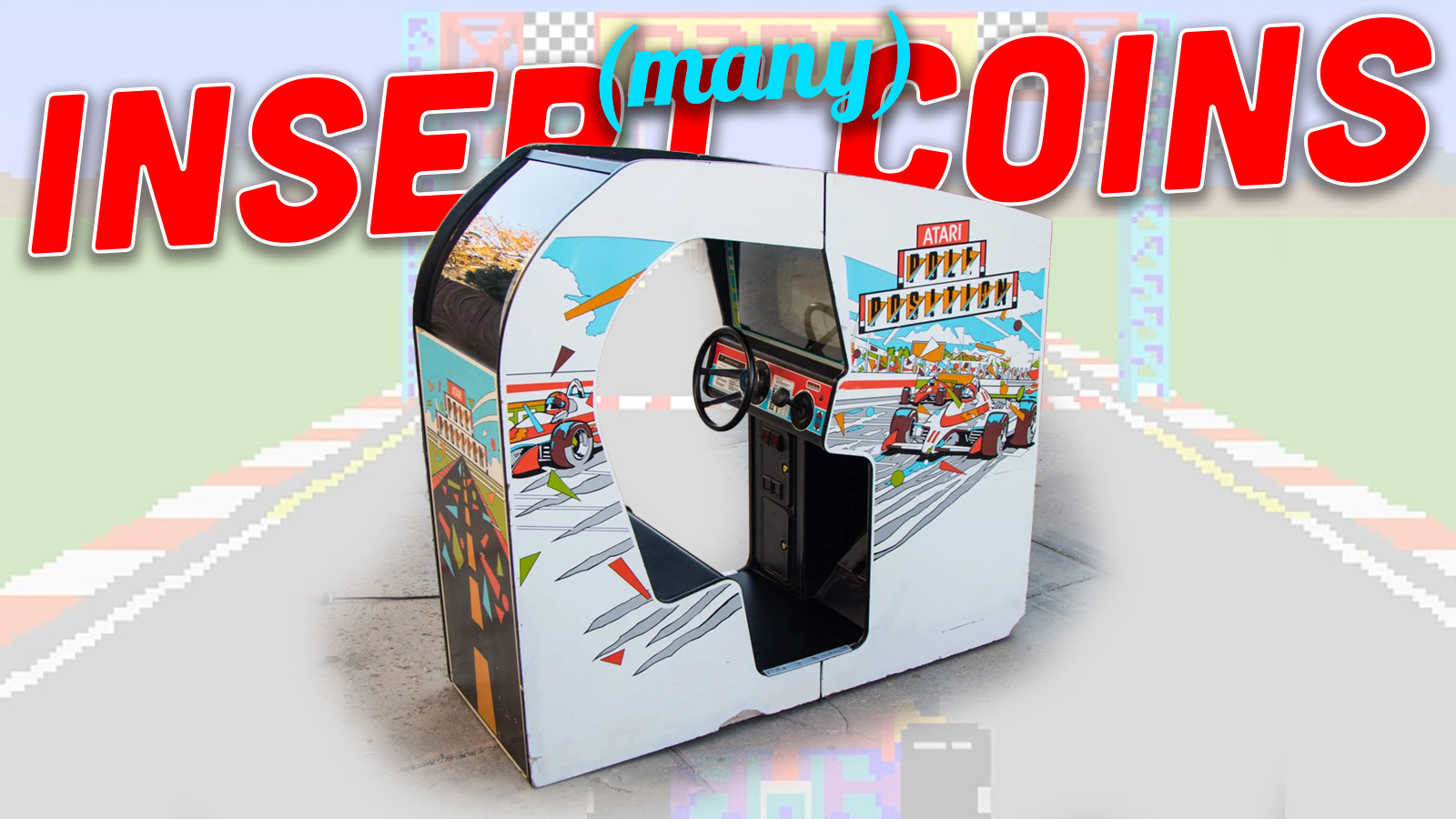
People can keep saying that there’s such a thing as a 180 degree V-engine until they’re blue in the face, I reject it utterly.
Fine, it’s different than a boxer engine. No problem.
But if there’s no V, it’s not a V-engine.
_ _ery true
I’m guessing these are virtually impossible to get the body and paint perfect on, new waves probably form in the side panels every time the doors open and close
What’s the “hose bibb” faucet (between the two sections of rubber hose) for?
It looks like what my dad did on our old ford LTD instead of replacing the heater core valve. Just turn it off in the summer.
Shade tree mechanics. I’ve done worse.
For something that was intended with only a practical purpose, the fluting/corrugation really looks nice.
Not related to anything but the last bus video:
SF Muni has an interesting historical fleet. There’s obviously the two iconic cable car lines, but the downtown/financial area uses a number of historical streetcars on their routes, in addition to the trams and trolleys and buses throughout the rest of the city. Bay Area transit is interesting as hell, and complicated a shit, with (at least when I was there about a decade ago) something like seven different fare schemes and fourteen carriers.
In any case it’s no surprise to me that they have a perfectly functional bus from 1938. lol
Great article and photos, the details on these busses were beautiful.
+1 The photo looking back over the steering wheel was particularly creative. It’s amazing how cell phones can fit in places that traditional cameras can’t.
I am not challenging the analysis, but “doing more with less” and “pancake 12-cylinder gasoline engine” are rarely spoken together.
Everything was so much more innovative back in the early to mid 1900s…. Now everything looks the same with drab boring colors and soulless engines
>rear mounted flat engine
>manual transmission
>cheerful red, white roof
>friendly round headlights
So this is what happens when you use a Moon Stone to evolve your VW Type 2.
Pancake or boxer: opposed cylinders that move inward and outward simultaneously. 180-degree V = this cylinder is coming in as that one is going out. In a flat-12 balance issues are essentially zero.
Corrugated sheet metal for added stiffness: hello, Ford Trimotor. Same deal.
And 2CV, its ground borne pal
Fun fact, the Ferrari “flat-12” is really a 180 degree V-12, too.
Which they will ABSOLUTELY tell you.
Oh yes, Ferrari prefers to call it that, though naming the 512BB “Berlinetta Boxer,” muddies things.
That crossed my mind.
I would swear that at some point in my life I saw an article describing a 178-degree V-12, or some similarly ridiculous number and I’m just throwing this out there. Was that a fever dream? Can someone enlighten me? I’ve seen V-angles usually in some fraction of 360 with the occasional weirdo like 23 in that very narrow why-even-bother Lancia V4. Anybody with more wisdom on this, please help me out.
Related, the VW VR6 motor is called a v motor with a slim 15 degrees between banks.
VW wanted to make sure it could reuse the same engine mounts as their (inline) 4 cylinder motors.
Another advantage of the slim v… The VR6 also has 1 head.
This website kicks ass. Thank you for another interesting article about something I had no idea existed.
Also, re: corrugation to save metal; you know those tan and light grey disposable salt and pepper shakers that you see all over the place, with the vertical lines on the sides? Same thing. I met the designer of those things; he claimed it was one of the most mass produced objects in the history of all mankind; the vertical fluting was to reduce the wall thickness and maintain strength, which also allowed faster time in the tool so higher production rate/hour. Anyway! Cheers!
Can we talk about that bus’s ass for a second?
Bus Bottom. Talk about mud flaps, my bus’ got ’em.
Little correction here: This is not a boxer engine. It’s a 180°-Vee. V12 engines are dynamically balanced, no matter what the Vee-angle is. So when you want or need a flat-12 configuration, there’s no need to make it a boxer. A boxer engine has separate crankpins for every conrod and thus is much longer and more complex than a (regular) Vee-type engine (which has two rods per crankpin).
https://www.hcvc.com.au/forum/truck_Chat/4099-pancake-engines
Whelp, I learned something new today. Guess it was worth getting out of bed.
Oh maaaan, I need to track one of these engines down now. That’s an engine you buy in search of a project to put it in.
A flat 12 and a manual transmission? It’s practically a Ferrari Testarossa!
A boxer engine, and manual transmission? It’s practically a Subaru WRC rally car.
And it’s the right shade of red!
Thanks so much for this article, Mercedes.
My wife and I have always liked vintage trains and buses, and after showing her this article, she says that a weekend trip to the IRM sounds like just the way to celebrate next Spring’s arrival!
Highly recommended. Thanks to Mercedes, I made my first visit this summer. Some day may make it for bus or antique car day
Here’s a little bit of odd ephemera about public transport buses.
Growing up in the Chicago suburbs, there is a public transit agency known as PACE which handles public bus routes. In the 1980’s, a company called DuPage Motor Coach (DPMC) was a subcontractor for PACE and operated a good number of these routes. What’s interesting is that DPMC also held the contract for bussing students to school in many suburban districts. Eventually DPMC was absorbed into Laidlaw, which is a larger, national company providing similar services.
Perhaps you can see where I’m going here… Those yellow school busses did double duty as public transit, although they would not use the stop arm and the phrase SCHOOL BUS written above the rear door on the outside would be covered up with a magnetic sign that displayed the route name/number on it.
Which makes me wonder if any other public transit systems used school busses when they weren’t in use shuttling students. And conversely, I wonder if any school districts use public transit busses to convey their students.
Oh that would have been fun to see! I don’t remember any particularly exciting Pace equipment while growing up, but IRM does have a Pace New Look!
One of the middle schools that I went to as a kid liked chartering fancy MCI coach buses for field trips. This school had so much money that all classrooms had the latest iMacs and iBooks just because they could.
A year later I would transfer to a school so poor it was in a converted church. It had radiators for heat and the computer lab was full of computers from the 1990s, or a solid 10 years old at the time.
Mercedes… I realized it might help if I told you this was in the late 80s and early 90s.
“And conversely, I wonder if any school districts use public transit busses to convey their students.”
Cincinnati uses the public bus system (Cincinnati Metro) for high school students. It used to be that Metro would run school-specific routes then shift the busses to regular routes. But then some admin with the district screwed up and didn’t get the contract done before a school year started and so the kids were shunted to regular bus routes instead. The resulted in quite the uproar as regular commuters were suddenly competing for seats with the kids on overwhelmed routes. SRO was common.
Kids were constantly late for school because the scheduled route didn’t arrive in time, or they’d be an hour early and not allowed in the building – sucks with a 20F wind chill and kids without sufficient winter wear. It also meant that kids with after-school extracurriculars might not get home until 9:00 or later in the evening because our regular routes here suck. The incidence of kids getting hit by cars increased as well because the kids would be racing to catch a bus in urban rush hour traffic.
We were (very) lucky that our kids were able to drive to school, and my daughter became regular transportation for some of her classmates because the bus routes just didn’t work with the school schedule.
The town I grew up in used city buses for schoolkids until after I had moved out of the district, but they used dedicated school routes.
Being near Chicago, you probably know this, but Chicago Public Schools students by and large take the normal CTA routes at a much reduced fare (train, bus, or both), but there’s still almost 20,000 students the district who need dedicated transport due to disability or other extenuating circumstances, and that gets contracted out, so far as I can tell. My kid took the bus throughout elementary/middle school and part of high school until we moved to a different neighborhood and they took the train.